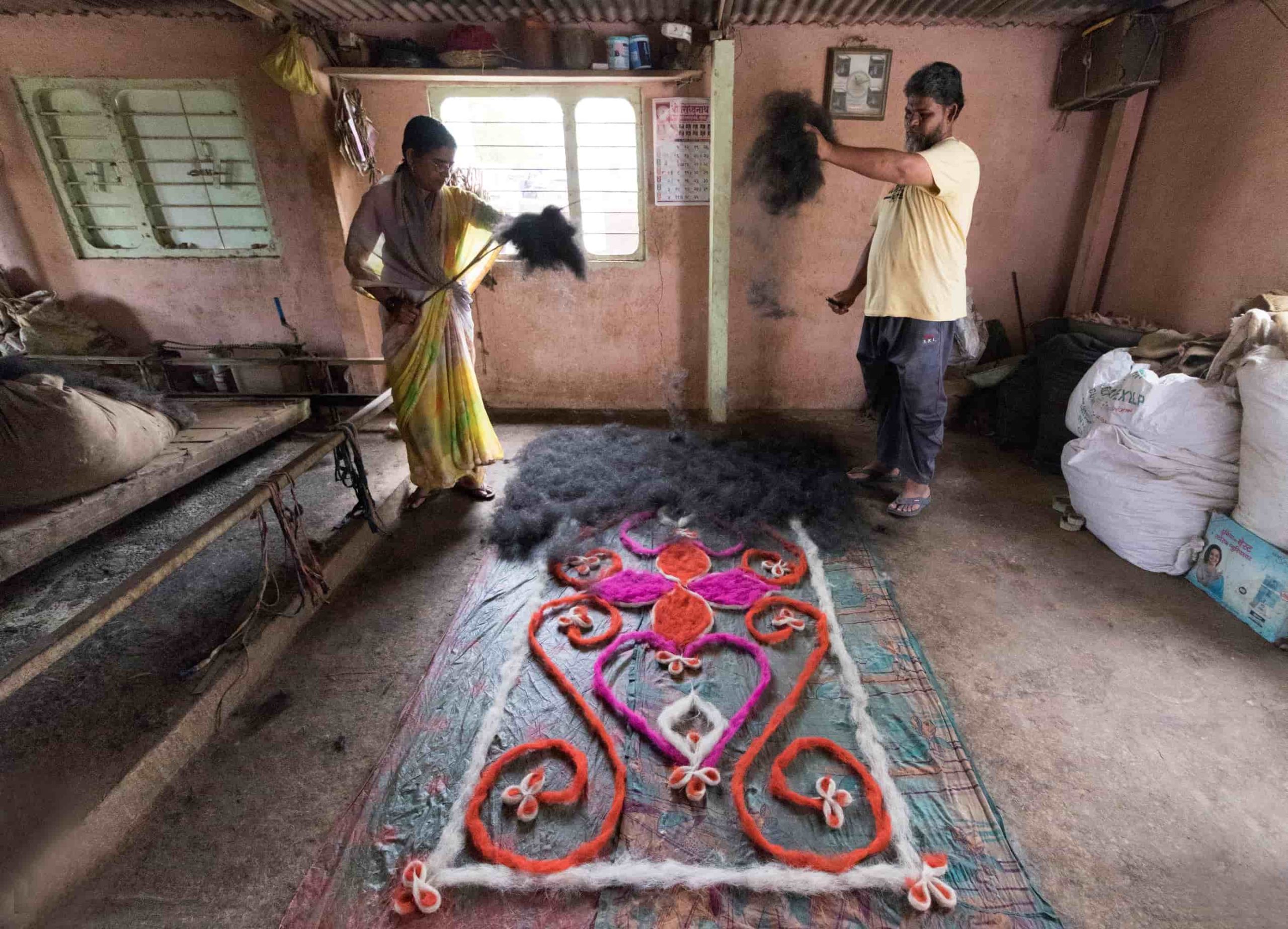
All about wool
What: With its spotlight on the indigenous wool of India, ‘Desi Oon’, an online exhibition-cum-sale is now open. India boasts a rich diversity of indigenous wool and woollens, created by an ecosystem of herders, hand spinners, weavers, felters and dyers. The Desi Oon story, through the journey of the wool fibre, traces the movement of sheep, the uniqueness of each breed, gorgeous diversity of traditional products and the wonderful skill of wool artisans. The show seeks to connect pastoralists and artisans with designers and some of India’s best craft organisations trying to revive an entire value chain of indigenous wool. Each partnering organisation highlights a particular sheep breed – the Black Deccani Sheep by Mitan and Earthen Tunes, Harsil sheep by Avani and Peoli, Chokla by Rangsutra, Patanwadi by Khamir, and the indigenised Gaddi-Merino sheep of Himachal Pradesh by Aana Jana and Kullvi Whims. The exhibition is complemented by a film festival on pastoralism.
When: 10 -25 December
Where: http://shop.rangsutra.com/
Film fest
What: Showcasing over 50 shorts, documentaries and feature films from South Asia, Canada, Britain, Italy, Sweden, Netherlands, Argentina, Australia, Turkey/Syria, Iran and
Thailand, the I-View World Film Festival is on. For the first time, the festival line-up includes a Visual Culture section, featuring experimental shorts, art documentaries and video-art works that blur the line between cinema and art. Supported and presented by the Kiran Nadar Museum of Art (KNMA), British Council, Prince Klaus Fund and Emami Art the curation engages visual artists from around the world to discuss issues of gender, politics, human rights and the power of the moving image to influence change.
When: Till 20 December
Where: www.plexigo.com
Looking back
What: Artist Meenakshi Nihalani’s research traces the roots of ongoing agrarian discontent to the 1700s, to reveal the extent to which unfair policies, taxation and fraudulent deals colluded during the colonial era to diminish the relevance of agriculture to the footnotes of history, in a context that has historically relied on farming. On display at the exhibition “I am Archiving for Us” she draws inspiration from the indigo revolution, which laid the foundation for Champaran Satyagraha, the first of Gandhi’s peaceful demonstrations in resistance to colonial rule. Working with indigo dye and jute textile that is common in the indigo-growing areas of Bengal and Bihar, the artist in this series of works captures altered topographies, erasure of cultural identities and transparently exploitative policies for the sake of indigo cultivation under colonial rule.
Where: Website of Prameya Art Foundation
https://www.praf.in/
Rival leagues trigger players’ suspensions and a legal battle in Indian golf, for now
Former Delhi CM Kejriwal criticises Centre, Delhi govt over worsening air pollution, alleges AQI manipulation
Delhi Police raids Nangloi unit producing fake engine oil, seizes over Rs 1 crore worth…
Mukesh Sharma reimagines digital components as living matter in his solo exhibition ‘Decoding Digital DNA’
Nine accused were arrested in coordinated raids as police uncovered organised networks supplying mule bank…
Nearly 1.57 lakh PUC challans issued in two months as Delhi steps up GRAP enforcement…